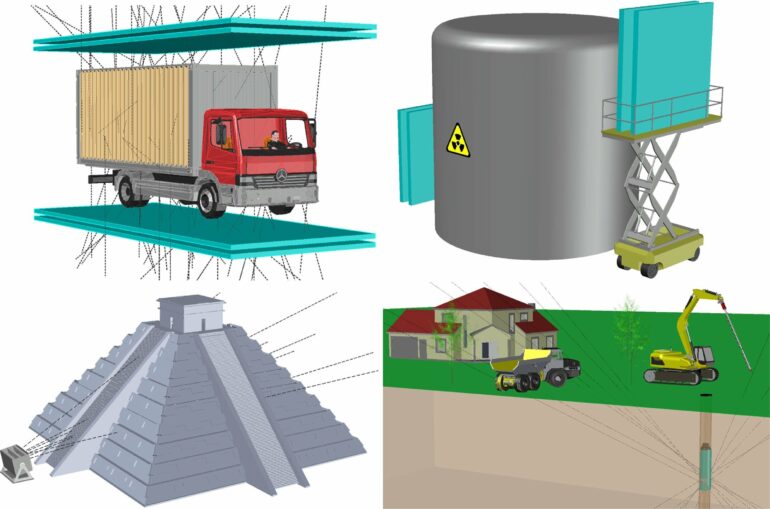Muon imaging, or “muography,” may be a niche field, but with uses in probing both man-made and natural structures, its appeal is expanding rapidly. A new open-access review published in Reviews in Physics by Lorenzo Bonechi and Raffaello D’Alessandro from the Istituto Nazionale di Fisica Nucleare, Italy, and Andrea Giammanco, Université Catholique de Louvain Centre for Cosmology, Particle Physics, and Phenomenology, Belgium, looks at the history, current status, and future prospects of muography.
Muon imaging methods hinge on the absorption or scattering by structures of atmospheric muons that are created in a chain reaction triggered when cosmic rays strike particles in the upper atmospheres. This scattering and absorption can be used to probe the interiors of these structures.
“Muon imaging creates links between otherwise disconnected areas of science, such as particle physics, geology, and archaeology,” Giammanco says. “Moreover, muons come for free, they are a perfectly safe form of radiation, and they are naturally produced and ubiquitous. There is no need for expensive accelerators, or for dangerous natural radiation sources.”
Giammanco explains that the uses of muons include probing the interior of volcanoes and ancient archaeological structures, which could have important societal implications.
“More than a half-million people live in the ‘red zone’ around Vesuvius, the volcano that famously wiped out the ancient Roman cities of Pompeii and Hercolaneum. Silent since 1944, Vesuvius may reawaken at any moment,” Giammanco says. “Muography gives access to the interior of such volcanoes in a more direct way than any standard method.”
The researcher adds that muography could also assist in the nuclear sector, as a monitoring tool in the disposal of nuclear waste and even in nuclear arms control.
More everyday uses are possible too, such as helping engineers to spot structural weaknesses in tunnels, bridges, and buildings, a use that links the field to its origins.
“It all started in 1955 with a very simple setup: Geiger counters on a rail, in an Australian mine, with the purpose of measuring tunnel overburden. The observed rate of counts was simply translated into an estimated thickness of the overburden,” Giammanco says. “As time progressed, detectors became more sophisticated; usually such developments were not motivated by muography, but by other purposes, including more fundamental physics research such as particle physics.”
Giammanco adds that researchers working with muography today build upon the developments in particle detectors pioneered at the Large Hadron Collider (LHC) and future research will be founded upon its successors, with muography becoming a field in its own right.
He explains that now is the ideal time for a review paper on muograghy, particularly given the increasing interest in developing more efficient and compact portable muon detectors.
“This may be a turning point in time for this subject. Until very recently, most of the muography literature has consisted of proof-of-principle measurements whose purpose is to demonstrate that a certain study is feasible. The private sector is becoming more and more interested and a portable multi-purpose detector is obviously an appealing idea for them. If costs are sufficiently cut, and if we manage to make such detectors almost ‘plug and play,” this may have a very deep impact on archaeology, exploratory geophysics, and civil engineering,” Giammanco concludes.
More information:
Lorenzo Bonechi et al, Atmospheric muons as an imaging tool, Reviews in Physics (2020). DOI: 10.1016/j.revip.2020.100038
Provided by
SciencePOD
Citation:
Seeing deeper with atmospheric muons: From archaeology to geology (2021, December 10)
